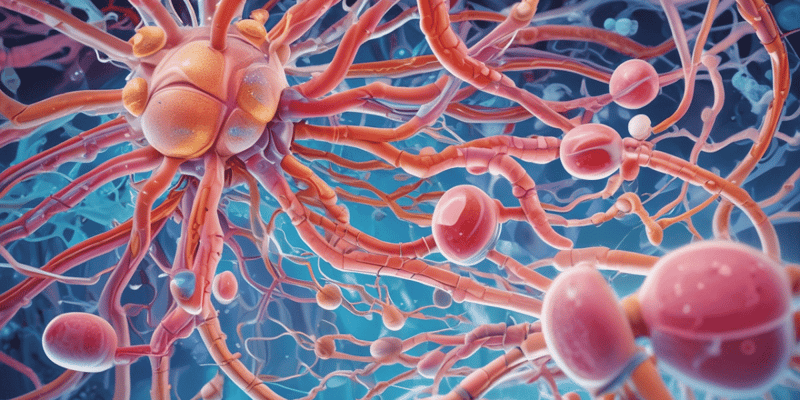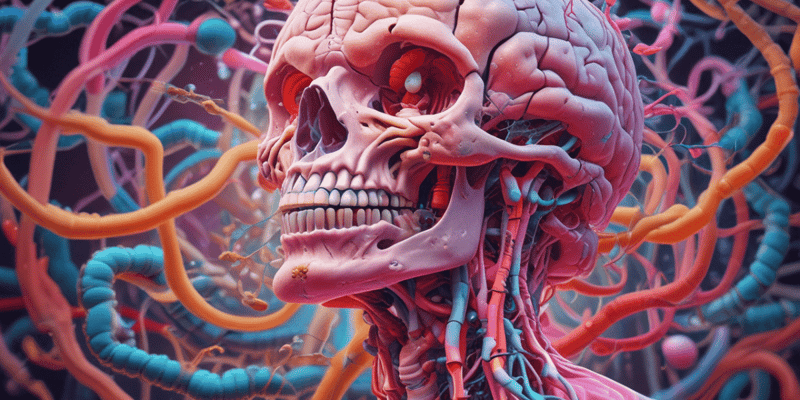6 Questions
Explain the significance of COX-1 and COX-2 enzymes in the context of NSAIDs' mechanism of action.
COX-1 is constitutively expressed and responsible for producing protective prostaglandins in the gastrointestinal tract and kidneys. COX-2 is inducible during inflammation or injury and also present in endothelium and kidneys. NSAIDs inhibit both COX-1 and COX-2, thereby blocking prostaglandin synthesis and exerting their anti-inflammatory and analgesic effects.
Differentiate between the central and peripheral analgesics based on their sites of action and effects.
Central analgesics act on the central nervous system, either cortically or subcortically, to relieve pain. They can cause euphoria, drowsiness, and addiction (e.g., opioids). Peripheral analgesics act locally or peripherally and include physical protectives, local anesthetics, and counter-irritants. They do not cause central effects like euphoria or addiction.
Describe the role of prostaglandins in the context of pain, fever, and inflammation, and how NSAIDs modulate their synthesis.
Prostaglandins induce pain, fever, and inflammation. Their synthesis is catalyzed by the enzyme cyclooxygenase (COX). NSAIDs inhibit the COX enzyme, thereby inhibiting prostaglandin synthesis, which in turn reduces pain, fever, and inflammation.
Explain the mechanism by which prostaglandins are synthesized, and the role of phospholipase A2 and arachidonic acid in this process.
Stimuli activate phospholipase A2, which releases arachidonic acid from membrane phospholipids. Arachidonic acid is then metabolized by the cyclooxygenase (COX) enzyme to produce prostaglandins. This pathway is a crucial step in the synthesis of prostaglandins, which are involved in various physiological processes, including pain, fever, and inflammation.
Explain the significance of the newly discovered COX-3 enzyme and its potential implications.
The newly discovered COX-3 enzyme is primarily found in the brain and is currently under investigation. Its presence in the central nervous system suggests that it may play a role in central mechanisms of pain and inflammation, potentially opening up new avenues for the development of analgesics targeting this enzyme.
Differentiate between the effects of NSAIDs and opioid (narcotic) analgesics in terms of pain relief, consciousness, and addiction potential.
NSAIDs relieve low-intensity pain, such as headaches, neuralgia, and myalgia, without impairing consciousness or causing euphoria or addiction. In contrast, opioid (narcotic) analgesics can relieve any type of pain, including severe pain, but they act on the cortical and subcortical regions, producing euphoria and having a high potential for addiction.
Test your knowledge on Central Analgesics, including Non-Steroidal Anti-inflammatory drugs and Opioid (Narcotic) Analgesic drugs. Learn about how they relieve pain through different actions without impairing consciousness or causing sensations like euphoria or drowsiness.
Make Your Own Quizzes and Flashcards
Convert your notes into interactive study material.
Get started for free



